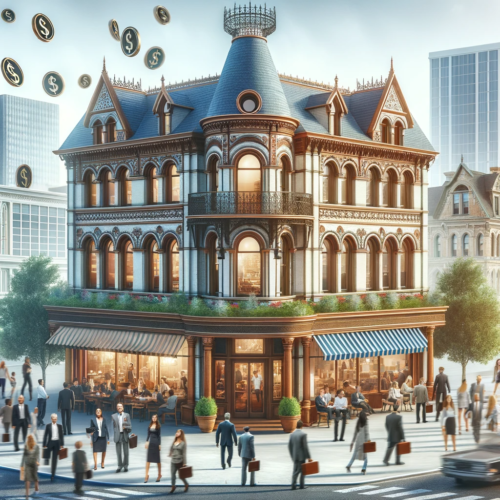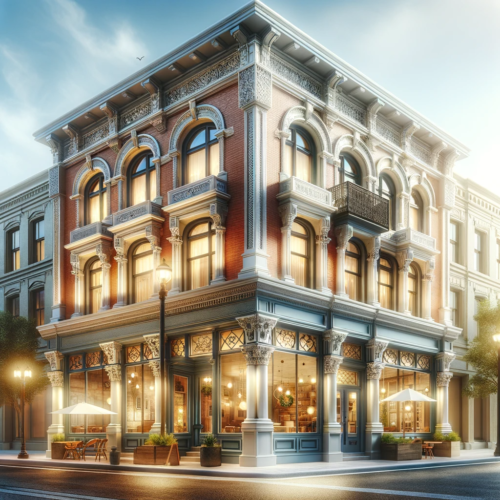The restoration of historical properties for commercial use is a journey that intertwines the past’s charm with the present’s functionality. It’s a complex field that demands a careful consideration of history, architecture, and modern business needs.
Regulatory Hurdles in Historical Property Restoration
Navigating the labyrinth of regulations surrounding historical property restoration is often the first significant challenge developers encounter. Each region has its own set of rules and preservation standards, which can vary drastically. These regulations are in place to ensure that the historical integrity of the property is maintained, but they can pose significant challenges in terms of project timelines and design flexibility. Understanding and adhering to these regulations is crucial, as non-compliance can lead to legal complications and potentially derail the entire project.
Moreover, dealing with the bureaucratic aspects of historical restoration projects requires a great deal of patience and expertise. Obtaining the necessary permits can be a lengthy process, often involving consultations with local historical societies, architects specializing in preservation, and government bodies. This stage is critical, as it sets the foundation for the entire restoration process, ensuring that the project aligns with both historical preservation standards and modern safety regulations.
Preservation Techniques: Balancing Old and New
The art of restoring historical properties lies in the delicate balance between preserving historical authenticity and accommodating modern functionalities. Specialists in this field must be adept in understanding and preserving the architectural nuances of the past, such as original woodwork, façades, and structural layouts. This process often involves extensive research to accurately restore or replicate historical features, which is essential in maintaining the property’s historical character.
At the same time, modernizing these spaces to suit contemporary commercial uses is equally important. This involves upgrading essential systems like electrical, plumbing, and heating without compromising the building’s historical integrity. Creative solutions are often required to integrate modern amenities, such as Wi-Fi, air conditioning, and energy-efficient lighting, in a way that respects the property’s original design. Achieving this harmony between old and new is what sets apart successful historical restoration projects.
Overcoming Structural Challenges
Addressing the structural challenges in historical buildings is a task that requires both reverence for the past and an embrace of modern engineering. Many of these buildings were constructed with techniques and materials that are no longer used, making restoration a complex and often unpredictable process. Structural reinforcements may be needed to ensure the building meets current safety standards, all while preserving its historical essence.
Innovative approaches are often required to deal with issues like foundation weaknesses, deteriorated masonry, and outdated framing methods. Restorers must employ a combination of traditional craftsmanship and contemporary engineering solutions. This blend of old and new techniques is essential for maintaining the building’s historical character while ensuring it is safe and functional for modern use.
The Rewards: Unique Market Appeal and Financial Incentives
The restoration of historical properties for commercial use is not just a nod to the past; it’s a lucrative business venture with significant market appeal. These properties often become landmark destinations, attracting businesses and consumers alike who are drawn to their unique character and historical significance. This distinctiveness can be a major selling point, setting a business apart in a crowded market. The aesthetic and historical value of these buildings can also command higher rents and property values, making them an attractive investment.

Financially, historical restorations can be incentivized through various programs and tax benefits. Many governments offer grants, tax credits, or other financial incentives to encourage the preservation of historical buildings. These incentives can significantly offset the often higher costs associated with restoration, making it a more viable and appealing option for investors and developers. The financial rewards, coupled with the satisfaction of preserving a piece of history, make these projects particularly rewarding.
Sustainable Development and Community Impact
Restoring historical properties is a form of sustainable development that conserves resources by repurposing existing structures. This approach minimizes the environmental impact compared to new construction, as it typically requires fewer materials and less energy. By preserving these buildings, developers contribute to environmental sustainability and cultural conservation, a growing concern among modern consumers.
Moreover, these restoration projects can significantly impact local communities. They often become focal points for revitalization efforts, breathing new life into neglected areas and boosting local economies. They can also serve as cultural landmarks, preserving the community’s history and identity. This blend of economic and cultural impact is what makes restoring historical properties for commercial use a uniquely rewarding endeavor.
Restoring historical properties for commercial use is an endeavor that blends respect for the past with the realities of modern business. It requires a deep understanding of both historical preservation and contemporary development. While the process is fraught with challenges, from navigating complex regulations to balancing preservation with modernization, the rewards are substantial. These properties offer unique market appeal, financial incentives, and the opportunity to contribute to sustainable development and community revitalization. For those willing to take on these challenges, the result is not just a commercially viable property, but a preserved piece of history that enriches both the landscape and the community.
